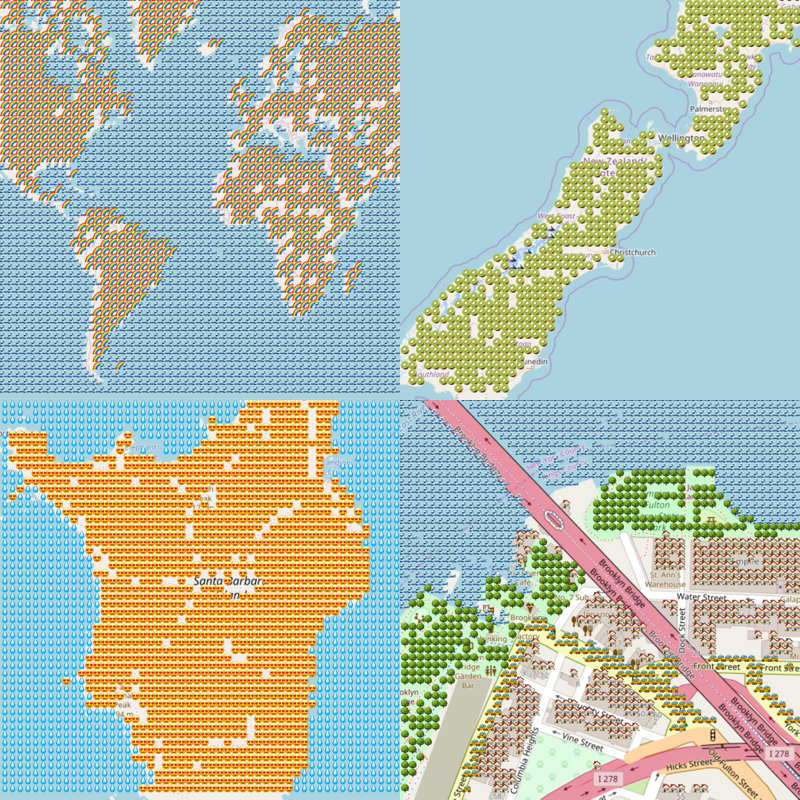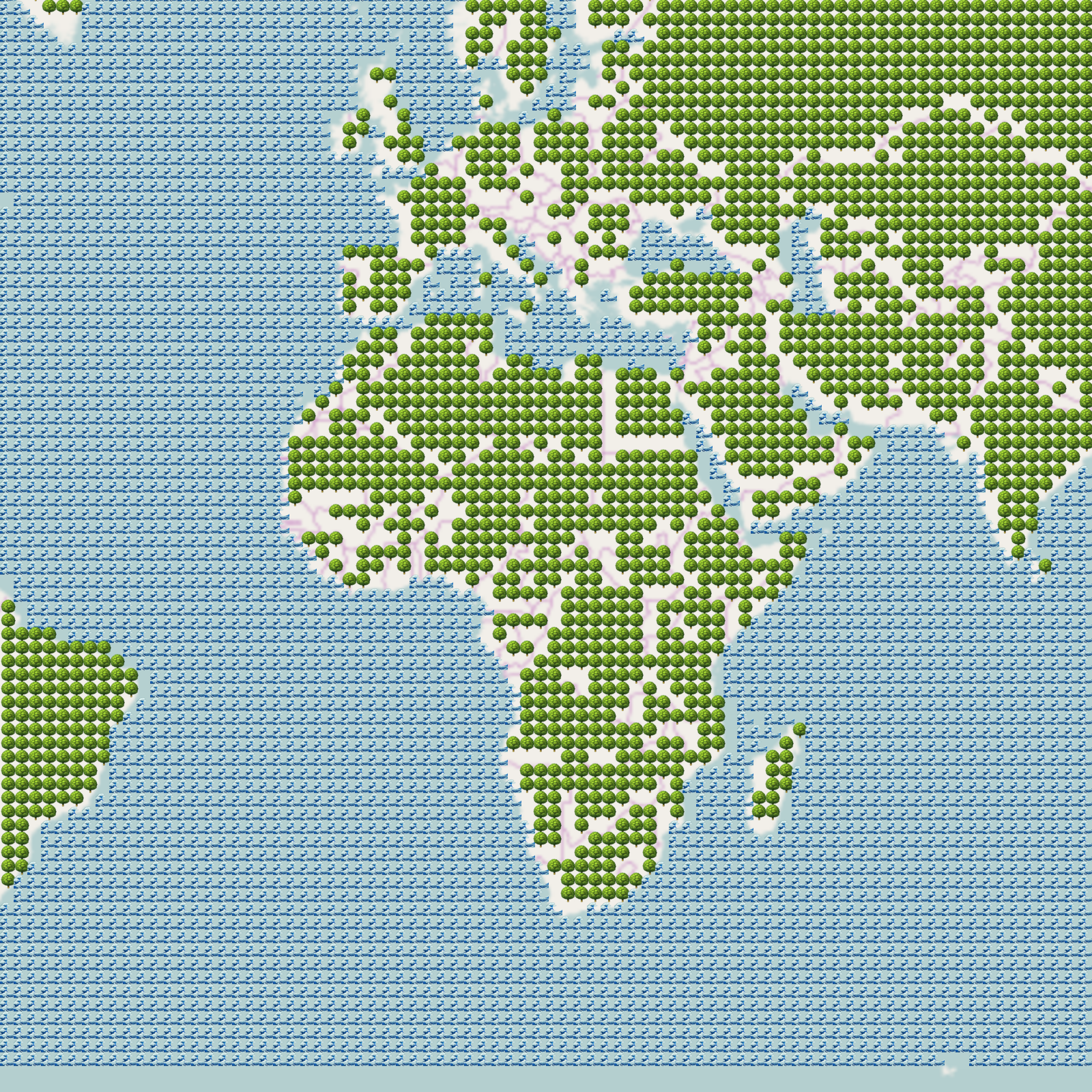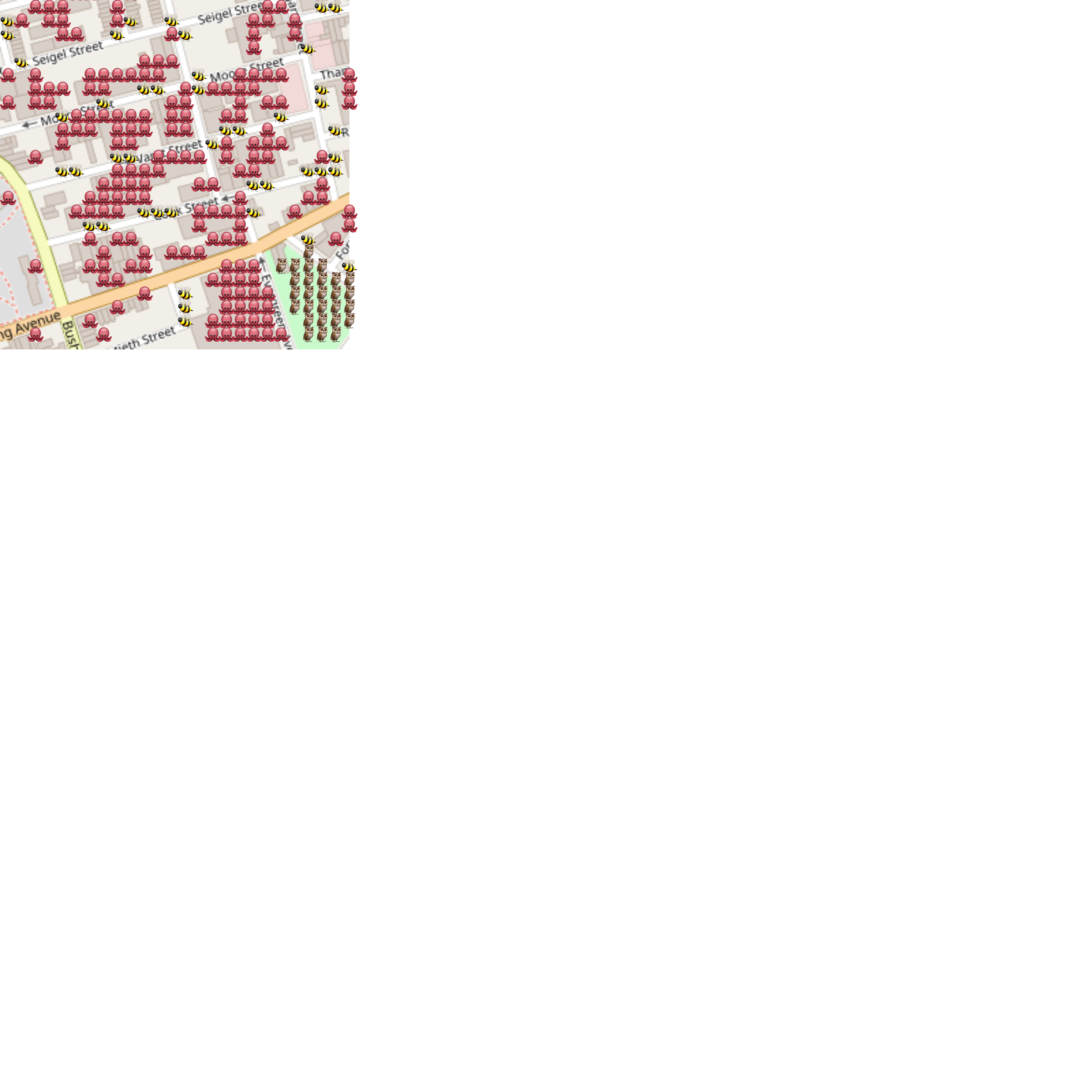emoji-map-generator
Map, Image, Emoji

Workshop

Title: Let’s Make Emoji Maps! With: Joey Lee (tw: @leejoeyk)
About: Let’s Make Emoji Maps! Emojis are an expressive (and fun) means of representing emotions and actions as well as physical features. There’s plenty of great examples of people using emojis in maps like the Emoji Weather Maps (https://blog.darksky.net/emoji-maps/), the Emoji Atlas (https://twitter.com/emojiatlas?lang=de) or the emoji maps by @nerik (https://nerik.github.io/Leaflet.Emoji/#emoji_nyc), all of which use emojis as a way to symbolize various things in geography. In this workshop, we will use emoji mapping as a way to explore some new ways of representing space as well as some concepts around data processing (e.g. pixel matching!).
This workshop will be a fun evening of tweaking code and creating emoji maps that mean something different for each of us. I’d ❤️ to 👀 you!
Setup
Materials
If you’re reading this, then you’ve found all the materials you need for the workshop! The best way for learning is to download the repository so you can tweak the code and see what happens.
A quick note on browsers
Chrome
- things should work fine here without any fiddling.
Firefox
- Note if you are using firefox, you will have to disable hardware acceleration to get your emoji’s to show up. You can find out more here.
- to disable: preferences > general > performance: uncheck “use hardware acceleration when possible”
A simple webserver
- There’s a bunch of ways to get a webserver running in your machine.
- I’d suggest:
On mac:
python -m SimpleHTTPServer
# see: localhost:8000
or any platform that can run Node.js, use the http-server npm module:
# install the module
npm install http-server -g
# run, user the --cors flag in case you get cross-origin issues
http-server
# see: http://127.0.0.1:8080
A color picker plugin
A color picker plugin will be useful for getting the color values from the images you wish to process. I use ColorZilla but there are a number out there for your browser of choice.
Overview
- A short introduction
- Dive into the Examples
- Fiddle with the Emoji App
- Show Emoji mapping alternative
- Independent work time
Short Introduction
In this workshop we are going to take advantage of leaflet.js and openstreetmap as our web mapping and data source and the functionality of p5.js as a creative coding tool to produce our emoji maps.
The principle idea we will be working with is the concept of “pixel matching”. Pixel matching is the process of reading through each pixel in an image and match it with something, like emojis, based on some conditions we specify.
By applying the principle of pixel matching onto static map images, we can then match our emojis onto the map based on rgb pixel values of interest. That means you might apply a 🌳 to a park with rgb(0, 255, 0) which is green or a 🌊 to rgb(0, 0, 255) which is blue.
Taken further, you might then think about generating or supplying your own maps where certain rgb colors are associated with emotions 😍 / 😭 and therefore represent explore more social geographies.
Part 1: Examples
We’re going to go through the examples incrementally in the examples/ directory to get a better idea about how leaflet.js and p5.js all fit together. Let’s dive in 🏊♀️!
You will notice comments in all of the examples. Where the comments is prefaced with: @MODIFY is where you should be looking to tweak and modify the code to see what happens. If you’re more advanced, then feel free to get all up in there
Example 1: 01-simple-image

This is a simple example that takes in a static image in a folder → reads it into p5’s canvas object → then says, “for the following pixel values, assign emoji A to rgb 1,2,3, then emoji B to rgb 2,3,4 and so on”
Example 2: 02-static-map

This is a simple example that takes in a static image tile based on the openstreetmap tile specified by a lat/lon/zoom → reads it into p5’s canvas object → then says, “for the following pixel values, assign emoji A to rgb 1,2,3, then emoji B to rgb 2,3,4 and so on”
Example 3: 03-dynamic-map

This is a simple example that takes in set of image tiles dynamically based on the openstreetmap tile specified by the viewport of the interactive map → reads it into p5’s canvas object → then says, “for the following pixel values, assign emoji A to rgb 1,2,3, then emoji B to rgb 2,3,4 and so on”
A new map can then be generated for different viewports. If you wish to change the rgb values and the emojis represented, you must change the code.
The EmojiMapFromTiles Object
This is a quick shout out to Object Oriented Programming (OOP) - it can be really helpful to build more readable and organized code bits. Here we create an object called EmojiMapFromTiles that contains the properties and functionality of our emoji generating activities.
Here’s a summary of what’s going on here:
// FIRST: we declare a variable to store our object
var myEmojiMap;
…
// SECOND: we create and new EmojiMapFromTiles object and store it into our myEmojiMap variable
var myEmojiMap = new EmojiMapFromTiles(mymap);
…
// THIRD: when the page loads, we call .makeEmojiMap() on our myEmojiMap object to create our emoji map
myEmojiMap.makeEmojiMap();
This is a really super duper quick and dirty explanation of what’s going on, but hopefully when you remix the code, it will feel more clear.
Part 2: App
The app extends Example 3: 03-dynamic-map by creating an interface around it. You can now change the parameters using the simple and silly user interface provided.
Notes/Resources:
- link to dan shiffmans coding train - channel: https://www.youtube.com/user/shiffman
- link to dan shiffmans coding train - pixel matching tutorial: https://www.youtube.com/watch?v=bkGf4fEHKak&list=PLRqwX-V7Uu6aKKsDHZdDvN6oCJ2hRY_Ig
- p5.js + community: https://p5js.org/
- leaflet.js: http://leafletjs.com/
- leaflet-image library: https://github.com/mapbox/leaflet-image
- YOU SHOULD ALL CHECK THIS OUT: leaflet-emoji // library for mapping emojis to geojson interactively in leaflet: https://github.com/nerik/Leaflet.Emoji
- Emoji Weather Maps
- the Emoji Atlas